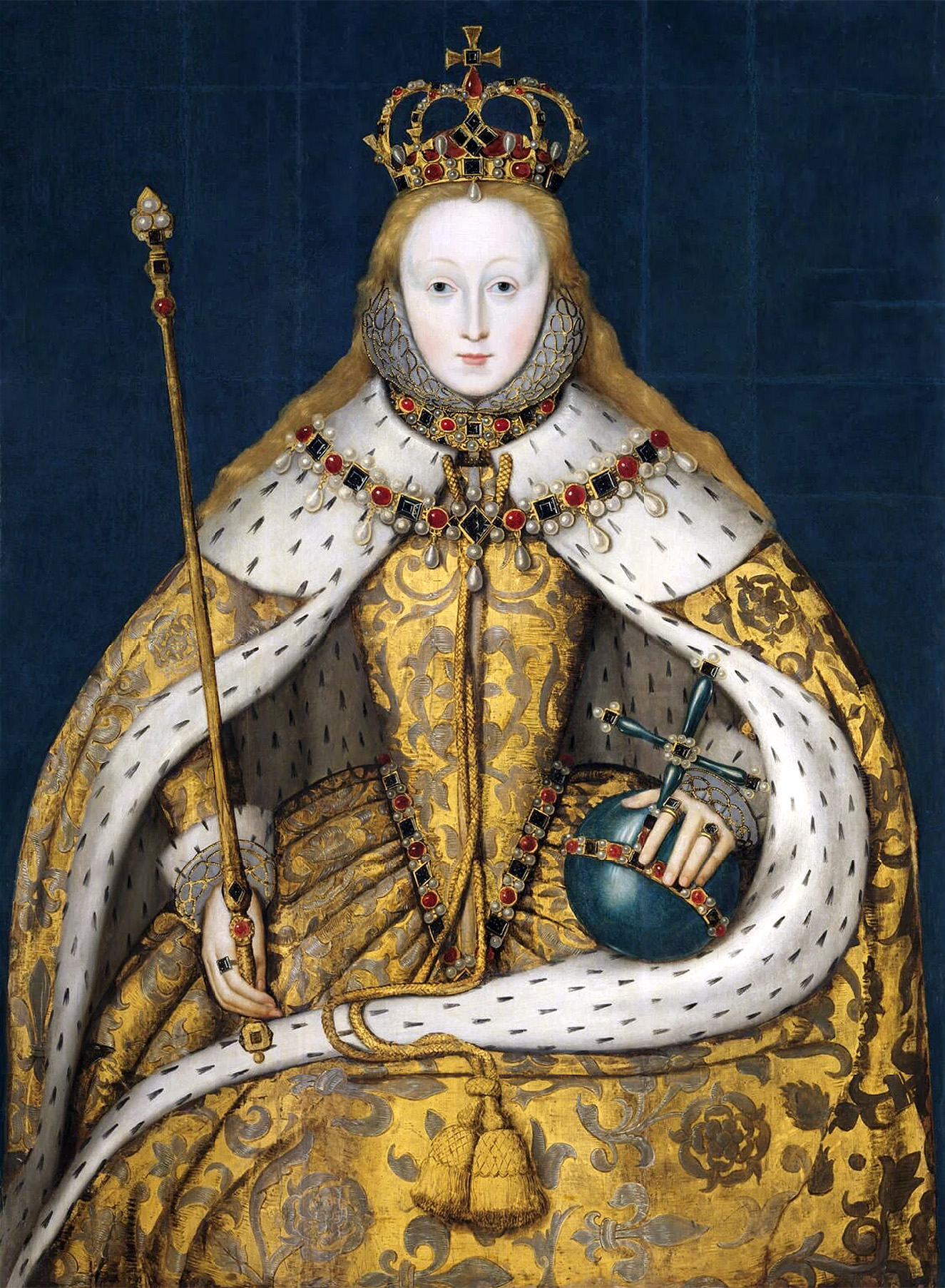
On 15 January 1559, Elizabeth Tudor was crowned Queen of England and Ireland at Westminster Abbey. The new queen was striking in her coronation robes, which drew attention to her famously pale skin, her flame-red hair and her sparkling dark eyes. Elizabeth had been wholeheartedly welcomed by her English subjects on her progress through the city of London. As had occurred at the coronation of Mary I, the public were enthusiastic about their queen, but Elizabeth was well aware that her subjects' affection for Mary had gradually been replaced with fear and hatred. She was determined not to make the same mistake as her sister. As yet, there was no sign that the public would grow disillusioned with Queen Elizabeth. The pageants welcomed the queen, and her gracious, considerate responses endeared her to the spectators, who were 'wonderfully ravished' at the sight of their new queen.
The date of the coronation had been planned in advance, and had been selected because it was viewed as auspicious, a good omen for the new reign. The renowned scholar, mathematician, astrologer and astronomer John Dee had consulted an 'electional chart' and had determined that the date of 15 January was that on which Elizabeth should be crowned. Inside Westminster Abbey, where English monarchs were traditionally crowned, Elizabeth was proclaimed queen in each of the four corners of the abbey by Owen Oglethorpe, Bishop of Carlisle. At each corner, the congregation were asked if they would assent to Elizabeth being their queen, and responded with enthusiastic cries of "Yea! Yea!" Elizabeth made the traditional offerings at the altar, before a sermon took place. Dressed in cloth of gold, she was then anointed after the Lords Prayer had been read and she had taken an oath.
Bishop Oglethorpe had been the only English bishop to be prepared to officiate at Elizabeth's coronation, which was troubling for the new queen. It reminded her that there was much work to do to ensure that a favourable religious settlement was achieved. The previous reign had been marked by religious bloodshed, which Elizabeth had personally been appalled by. For now, however, she was determined to enjoy her coronation. Having been anointed, Queen Elizabeth sat in St Edward's Chair and was kissed by her Lords Spiritual and Temporal, who had knelt to her in homage. A mass took place before the queen kissed the Bible. Following the ceremony, the queen changed her dress and departed to Westminster Hall to enjoy her coronation banquet. Queen Elizabeth would reign until 1603 and she has been immortalised as one of Britain's most successful monarchs.
No comments:
Post a Comment